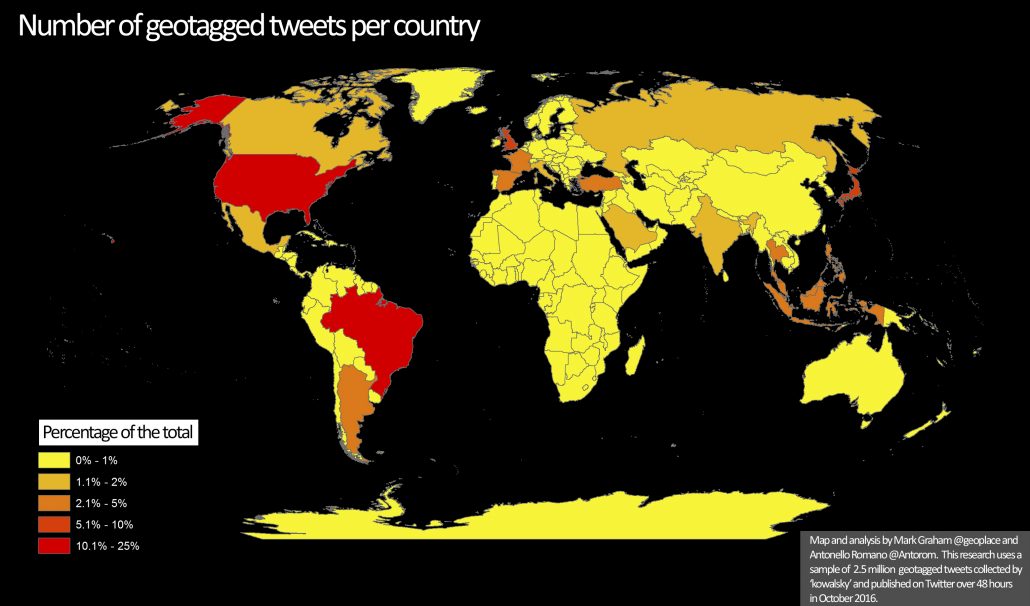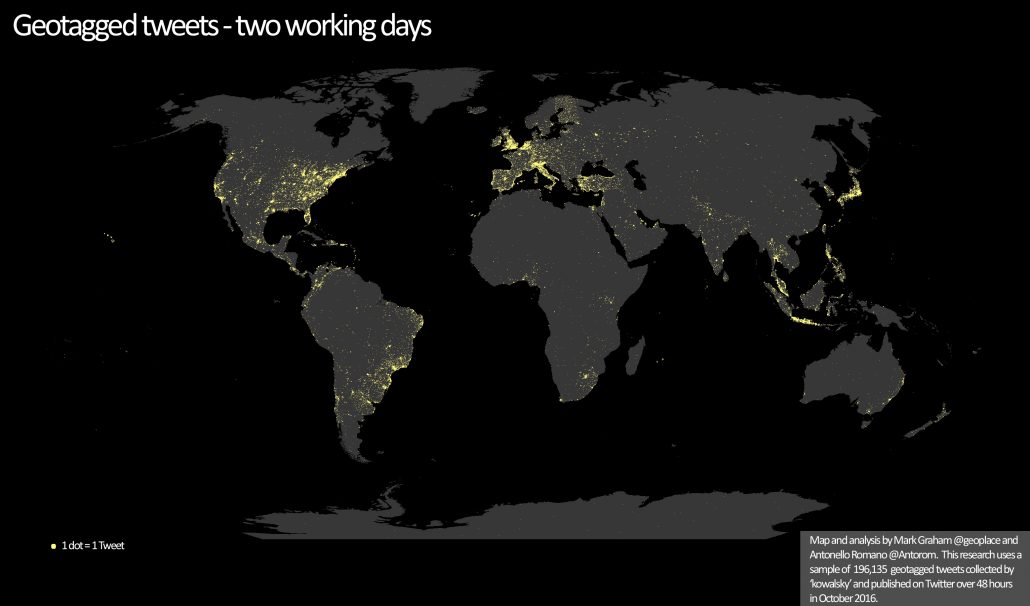I’ve been working with Antonello Romano to update some of our older research into the geography of Twitter.
Above you can see some maps from a sample of about 2.5 million tweets collected worldwide over 48 hours in October 2016. These are collected using the Twitter streaming API (at most a 1% sample).
Because of the nature of the data, I wouldn’t read too much into any specific differences. But what these maps broadly achieve is that they give us a sense of the digital cores and peripheries of our world.
The two ‘world at night’ style maps give a sense of which parts of the world light up the internet with content, and which parts are still relatively left in the dark. The choropleth map (the one in which countries are shaded) then gives us a sense of which countries produce the bulk of content. The US (25%) and Brazil (14%) together produce more than a third of the world’s content.
Other parts of the world produce only a tiny amount of content in comparison. In all of Africa combined (2.7% of the world’s total), there are is less content produced than in Turkey (4%) or Spain (3%).
We live in a world in which almost half of humanity is connected to the internet. And almost anyone, anywhere, in any position of power is connected. This means that information in social media streams (like Twitter) can have an outsized influence. Knowledge shared on Twitter can shape how people around understand society, the economy, and politics. But, as we see here, that knowledge has distinct geographies. Let’s remember that even in 2016, this is anything but a truly global network.
Further reading:
Graham, M, S. Hale, and D. Gaffney. 2014. Where in the World are You? Geolocation and Language Identification in Twitter. The Professional Geographer 66(4) 568-578. (pre-publication version here)
Graham, M., De Sabbata, S., Zook, M. 2015. Towards a study of information geographies:(im)mutable augmentations and a mapping of the geographies of information Geo: Geography and Environment.2(1) 88-105. doi:10.1002/geo2.8
Graham, M. 2015. Information Geographies and Geographies of Information New Geographies 7 159-166.
Graham, M., S. Hale & M. Stephens. 2011. Geographies of the World’s Knowledge. Convoco! Edition.
(cross posted from my blog)


